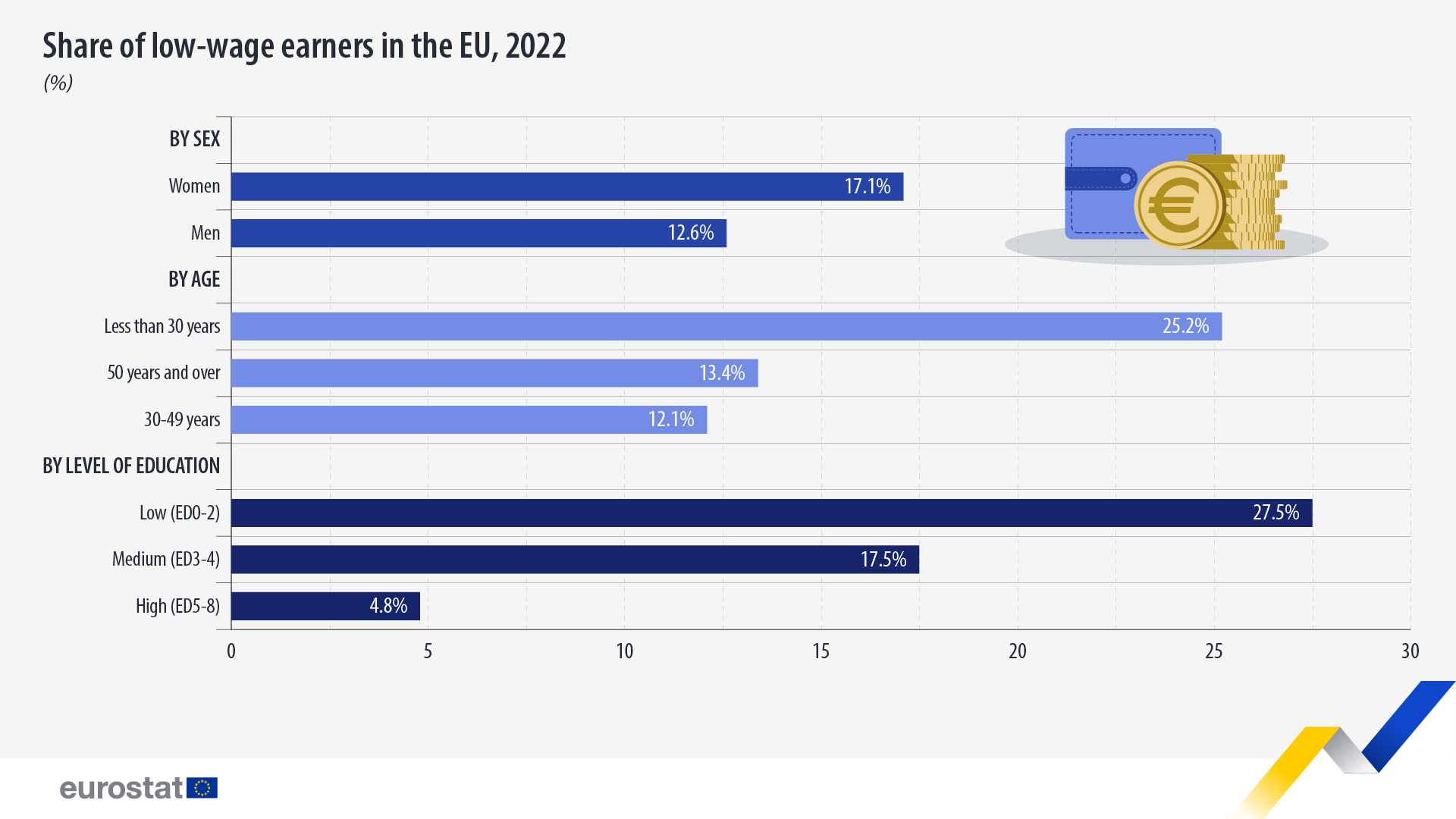1 out of 7 EU employees is a low-wage earner

In 2022, 14.7% of employees in the EU were low-wage earners, against 16.2% in 2018. Low-wage earners are employees earning two-thirds or less of the median gross hourly earnings in the country of work.
The share of low-wage earners was higher among women than men in 2022 (17.1% compared with 12.6%). In 2018 the shares were 18.2% of female and 12.5% of male employees.
Low-wage earners accounted for about a quarter (25.2%) of employees younger than 30. In the older age groups this share was lower: 12.1% among employees aged 30-49, and 13.4% among those older than 50.
Source datasets: earn_ses_pub1s, earn_ses_pub1a and earn_ses_pub1i
The lower the level of a person’s education, the higher the likelihood of being a low-wage earner. In 2022, 27.5% of employees in the EU with a low education level were low-wage earners, compared with 17.5% of employees with a medium level of education and 4.8% of those with a high education level.
Highest share of low-wage earners in Bulgaria, lowest in Portugal
The proportion of low-wage earners varied significantly among EU countries in 2022. The highest share was observed in Bulgaria (26.8%), followed by Romania (23.9%), Latvia (23.3%), Greece (21.7%), Estonia (21.2%) and Cyprus (20.0%).
In contrast, less than 10% of employees were low-wage earners in Portugal (1.8%), Sweden (4.1%), Finland (6.5%), Italy (8.8%), Slovenia (9.4%) and France and Denmark (9.7% both).
Source dataset: earn_ses_pub1s
Highest share of low-wage earners in food and accommodation services
In 2022, the share of low-wage earners recorded in the EU was highest in accommodation and food service activities (35.1%); followed by administrative and support service activities (32.3%), that includes the persons employed by interim agencies.
The type of contract also plays a role: among employees with an employment contract of limited duration, 27.2% were low-wage earners, compared with 12.6% of those with an indefinite contract.
For more information
- Statistics Explained article on earnings statistics
- Thematic section on labour market
- Database on labour market
Methodological notes
- Data presented in this news item comes from the Structure of earnings survey (SES) which is carried out with a four-yearly periodicity according to Regulation (EC) No 530/1999.
- Economic activities refer to activities according to the statistical classification of economic activities in the European Community (NACE rev. 2).
If you have any queries, please visit our contact us page.


